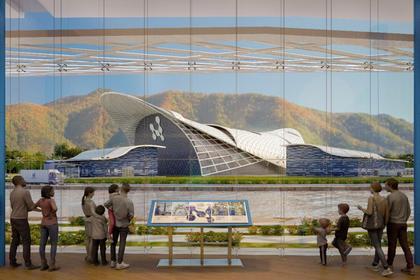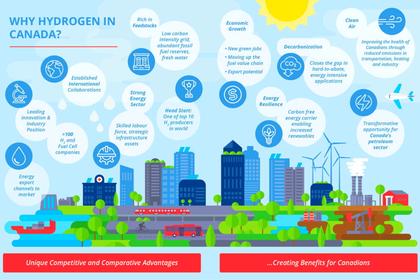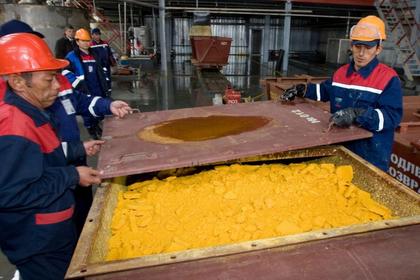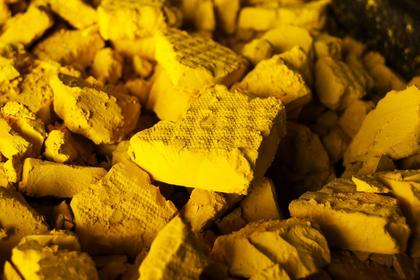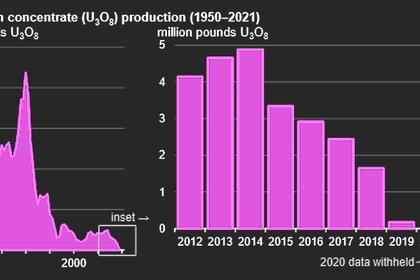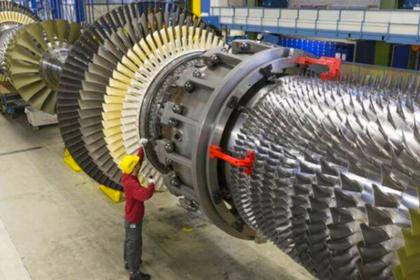
CANADA'S URANIUM MINING
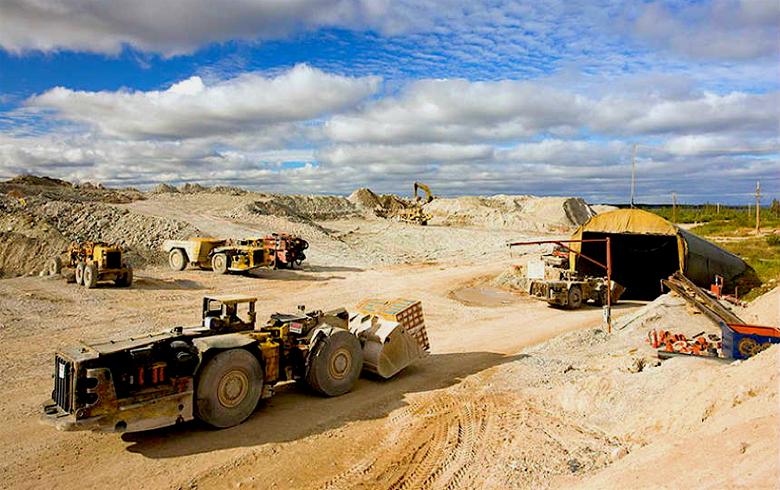
WNN - 18 October 2022 - The recovery of uranium-bearing solution during the ongoing Phoenix in-situ leach (ISL) feasibility field test (FFT) is a historic moment for uranium mining in Canada, according to Denison Mines Corp.
The successful recovery of uranium-bearing solution means that injection of lixiviant - the leaching phase of the FFT - which began in September has now ended. Preparations are under way to transition to the neutralisation phase, which is expected to be completed before the end of the year. The final phase of the test - management of the recovered solution - is expected to start in the spring of 2023.
Denison President and CEO David Cates said the recovery of uranium-bearing solution "reflects the culmination of several years of technical de-risking and provides tangible validation" of the company's selection of ISL - sometimes referred to as in-situ recovery (ISR) - as the mining method for Phoenix following a 2018 pre-feasibility study for the entire Wheeler River project. "With this result, Denison has truly showcased its industry leadership in bringing the low-cost ISR mining method to the high-grade uranium deposits of the Athabasca Basin," he said.
Wheeler River, in northern Saskatchewan, is host to the high-grade Phoenix and Gryphon uranium deposits which were discovered by Denison in 2008 and 2014, respectively. The project includes combined indicated mineral resources of 132.1 million pounds U3O8 (50,812 tU) at an average grade of 3.3% U3O8, as well as combined inferred resources of 3.0 million pounds U3O8 at an average grade of 1.7% U3O8. The project is a joint venture between Denison and JCU (Canada) Exploration Company Limited (JCU), with Denison holding an effective 95% ownership interest (90% directly, and 5% indirectly through its 50% ownership of JCU).
The 2018 pre-feasibility study considered the potential economic merit of developing Phoenix as an ISL operation and Gryphon as a conventional underground mining operation. Taken together, the project is estimated to have mine production of 109.4 million pounds U3O8 over a 14-year mine life.
ISL recovers minerals from ore in the ground by dissolving them in situ. The solution is then pumped to the surface where the minerals can be recovered. This causes little surface disturbance and generates no tailings or waste rock, but requires suitable geology: the orebody needs to be permeable to the liquids used, and located so that groundwater away from the orebody cannot become contaminated. More than half of the world's uranium production is now produced by ISL, but the technique has not so far been used in Canada.
The FFT is using a commercial-scale ISL test pattern to enable a combined assessment of the hydraulic flow properties at the deposit and the leaching characteristics that have been assessed through a metallurgical core-leach testing programme. This will provide further verification of the parameters needed for the successful application of ISL at Phoenix, as well as validating and informing design elements including expected production and remediation profiles.
"The recovery of uranium-bearing solution at targeted rates and grades is history in the making," Kevin Himbeault, Denison's vice president of Plant Operations & Regulatory Affairs, said. "Initial analysis indicates the hydrogeological system has responded as expected with pH trends, flow characteristics and uranium recovery meeting expectations."
The next phase of the FFT - the neutralisation phase - will involve the recovery of the remainder of the leached mineralised solution and is intended to verify the efficiency and effectiveness of the process for returning the zone to environmentally acceptable conditions. During this phase, a mild alkaline solution will be injected into the leaching zone to neutralise the area and reverse the residual effects of the acidic solution injected during the leaching phase.
-----
Earlier:
